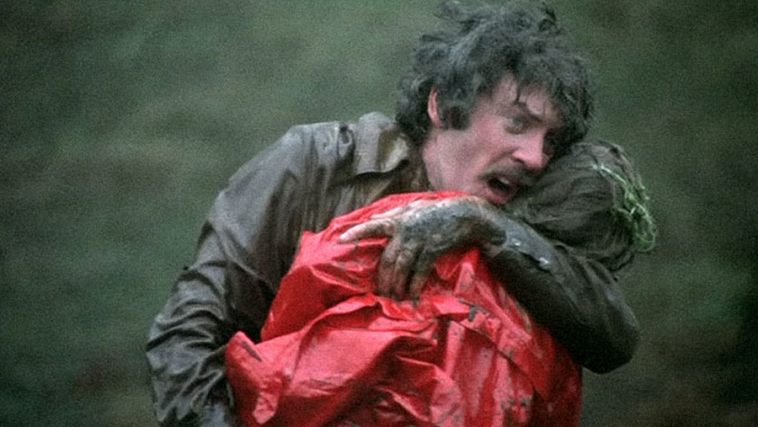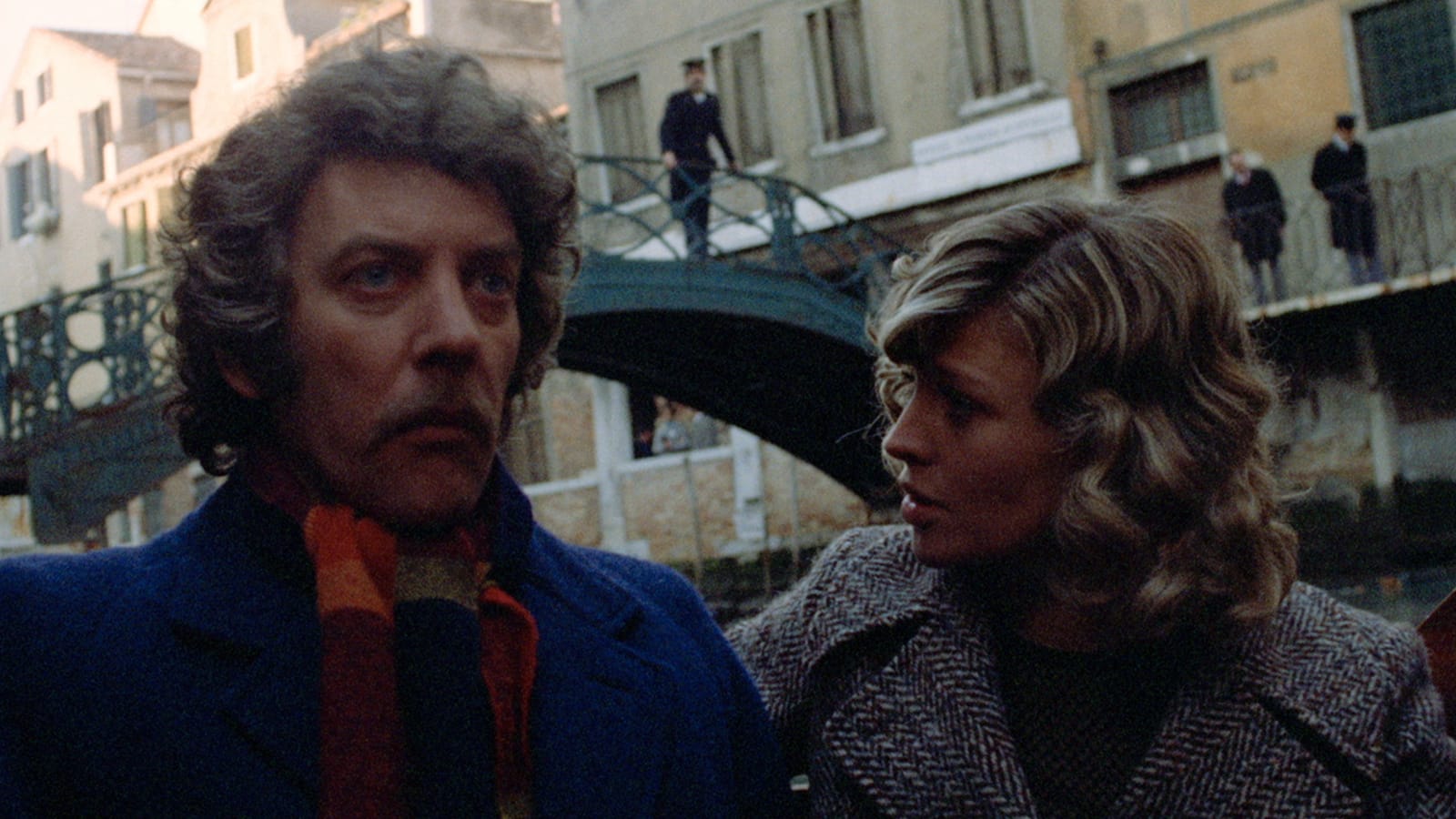Nicolas Roeg’s 1973 psychological thriller finds a couple navigating the grief cycle in an unforgiving environment
There are so many iconic film locales in the world — cities known for their landmarks and the feelings they evoke, often becoming such clear stereotypes that they can be used as shortcuts to character development. New Yorkers are going to be fast-paced, ambitious and brash. Parisians are going to be romantic, dreamy and esoteric. These locations prime us for financial thrillers or charming rom-coms, respectively.
Horror films, on the other hand, tend toward isolation — country roads with not another car in sight, old abandoned houses that were suspiciously cheap, foreign worlds with dangerous customs and so on. Rarely are major cities successfully leveraged for horror. They’re too crowded, too recognizable, too grounded in reality to feel as uncanny and unsettling as horror films so often require.
More October Horror: High Tension: Conflicting Fantasies of a Different Body
All of this makes Don’t Look Now’s remarkable use of Venice — a major tourist city full of recognizable landmarks and its own stable of cultural cliches — all the more impressive.

Laura (Julie Christie) and John Baxter (Donald Sutherland) are a happily married couple whose only daughter drowns in a pond behind their home. Following this tragedy, they move to Venice for John’s new assignment: restoring the ceramics and stonework of old churches in the city. The move is a chance to rebuild, literally and metaphorically. Thus begins the most fitting of thematic connections between their fragile grieving process and the city’s complex structure of crumbling buildings.
The journey to acceptance of a tragedy is always a winding one, but typically there’s some feeling you’re moving in the right direction. In Venice, however, it’s so easy to get lost — to think you’re making progress only to find yourself at a dead end: a street ending in water, going in circles and coming back exactly where you started. It’s the grief cycle in place form. An endless parade of similar days, similar streets and that damned water everywhere.
More October Horror: The Beauty And Horror Of Eyes Without A Face Is More Than Skin-Deep
Perhaps the Baxters’ journey is best described using the classic Kubler-Ross grieving model, through which it becomes clear that moving to Venice was the worst possible choice the couple could have made to recover from their loss and preserve their marriage.
Denial: Characterized by a desire to avoid reminders of the tragedy
Grappling with memories and overcoming constant reminders of loss can be the most challenging part of the grieving process. The Baxters find themselves in the only city in the world that is completely surrounded and only navigable by water. Their very livelihoods are built upon the substance that killed their daughter.
Anger: Characterized by frustration and anxiety
The Baxters find themselves in a constant search for answers. Why did this happen to their daughter? How could they have let it happen? When John first sees a childlike figure in a red raincoat reminiscent of his daughter’s on a canal bank, he follows her. He can’t explain his desire to follow the figure, but he keeps losing her. Venice is a maze of a city, featuring thousands of identical bridges, winding stair wells and dark alleyways for easy disappearing acts.
Bargaining: Characterized by the struggle to find meaning and the desire to tell one’s story to others
Laura feels lucky to meet two peculiar sisters in a cafe one afternoon, especially when the blind sister tells her she can see Laura’s deceased daughter, Christine. Laura is willing to believe anything just to have someone to share her story with. Shortly after meeting the sisters, Laura faints. When being taken to the hospital, we see many shadowy figures overlooking the scene on the famous Bridge of Sighs. It feels suddenly as though the whole city is involved in the Baxters’ story, however psychically and ominously.

Depression: Characterized by helplessness and a desire to run away
When Laura gets an opportunity to leave Venice, she takes it immediately, leaving John to wallow alone in misty nostalgia along the damp, dark streets of rainy Venice.
Acceptance: Characterized by exploring new options and finding a way forward
John attempts to reach acceptance by finally encountering the child in the red raincoat. It’s his final chance to come face to face with the specter of his daughter so he can find a new path without the constant reminders and distractions. Sadly, this encounter provides no closure.
The film culminates in a wild ringing of bells in a funeral of sorts as the full force of the Baxter family’s disintegration comes to a head. If there is any acceptance to be found for them in Venice, it’s their collective return to the water that has ultimately become the arbiter of their fates, just as it controls the lives of the Venetian people.
Find the complete October Horror Archive here:

Follow our list of the 31 Days of October Horror on Letterboxd
(Split Tooth may earn a commission from purchases made through affiliate links on our site.)




